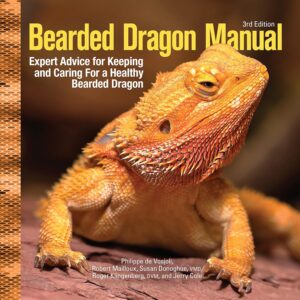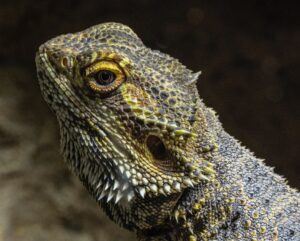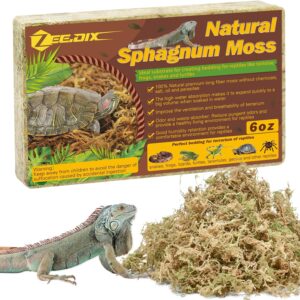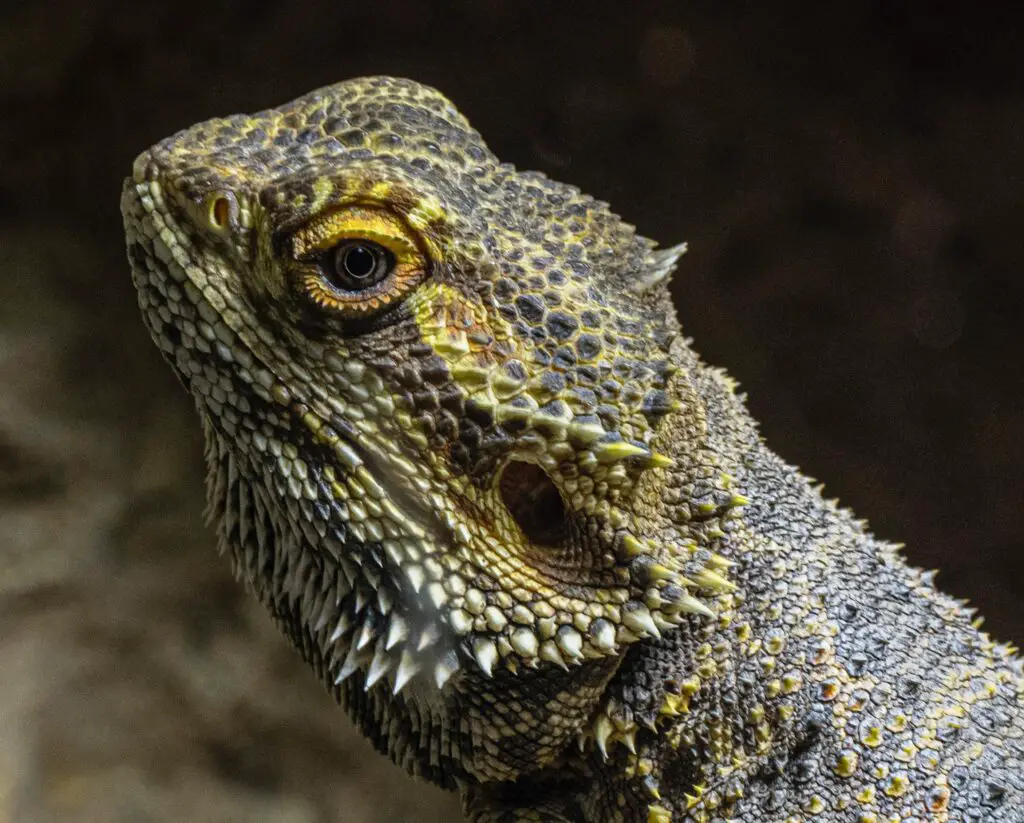Bearded dragon nose
Bearded dragon nose: Bearded dragons, scientifically known as Pogona, have gained immense popularity as reptile pets worldwide. These docile and captivating creatures are native to the arid regions of Australia and thrive in captivity due to their manageable size, gentle nature, and relative ease of care.
Bearded dragons have a unique set of characteristics that sets them apart from other reptile species commonly kept as pets. Understanding these distinctive traits is crucial for providing adequate care and ensuring the well-being of these magnificent creatures.
Brief Overview of Bearded Dragons as Popular Reptile Pets
 Bearded dragons have become one of the most beloved reptile species among pet enthusiasts for various reasons. Firstly, their moderate size makes them suitable for both novice and experienced reptile keepers alike.
Bearded dragons have become one of the most beloved reptile species among pet enthusiasts for various reasons. Firstly, their moderate size makes them suitable for both novice and experienced reptile keepers alike.
Adult bearded dragons typically reach a length of 18 to 24 inches (45-60 cm), making them easily accommodated in standard-sized terrariums. Secondly, bearded dragons exhibit fascinating behaviors that captivate owners’ attention.
Their impressive ability to puff out their throat sacs into a beard-like display during courtship or when feeling threatened has earned them their peculiar name. This characteristic adds an element of intrigue and entertainment to observing these remarkable creatures.
Furthermore, bearded dragons possess a gentle temperament compared to other reptiles, making them highly suitable as pets for individuals seeking companionship from cold-blooded companions. They can readily adapt to human interaction and form bonds with their caretakers over time.
Importance of Understanding the Unique Features of Bearded Dragons, Including Their Nose
To provide optimal care for bearded dragons, it is crucial to delve into the intricacies of their physiology and understand how each feature contributes to their overall well-being. One often overlooked but significant aspect is their nose.
The nose serves multiple purposes beyond just olfaction in bearded dragons. It plays a pivotal role in their thermoregulation, allowing them to adjust their body temperature efficiently.
Furthermore, the nose acts as a protective barrier against potential injuries and infections. Understanding the unique features of a bearded dragon’s nose enables pet owners to recognize any abnormalities or issues that may arise.
By familiarizing themselves with the functions and adaptations of the nose, owners can provide proper care, detect early signs of health problems, and seek timely veterinary assistance if needed. In the following sections, we will explore the anatomy of a bearded dragon’s nose in detail.
We will also discuss how this intricate structure facilitates various functions crucial to their survival in their natural habitat and captivity alike. Additionally, we will address common health issues related to the bearded dragon’s nose that pet owners should be aware of to ensure a long and healthy life for their scaly companions.
The Anatomy of a Bearded Dragon Nose
External Structure: Nostrils and Nasal Scales
 The nostrils of a bearded dragon, situated on the upper part of its snout, play a crucial role in its respiratory system. These tiny openings are strategically positioned to allow the reptile to breathe efficiently while keeping the nose protected.
The nostrils of a bearded dragon, situated on the upper part of its snout, play a crucial role in its respiratory system. These tiny openings are strategically positioned to allow the reptile to breathe efficiently while keeping the nose protected.
Bearded dragons possess an intriguing adaptation where they can independently control each nostril, allowing them to regulate airflow and scent detection more effectively. Examining the nasal scales reveals another layer of intricacy in their anatomy.
These scales cover and shield the external structure of the nose, providing an additional protective barrier against potential harm or injury. The nasal scales not only contribute to maintaining the structural integrity of the nose but also help prevent foreign particles from entering their respiratory system.
Internal Structure: Nasal Passages and Sense of Smell
Delving into the internal anatomy, we find that bearded dragons have a complex network of nasal passages intricately connected to their respiratory system. These passages enable air to flow smoothly from their nostrils into their lungs, facilitating respiration.
The internal structure ensures efficient oxygen exchange while filtering out any impurities present in the inhaled air. Furthermore, bearded dragons possess an exceptional sense of smell that aids them in various aspects of their lives.
Their highly developed olfactory system allows them to detect scents with remarkable precision. Within their nasal passages lies a specialized sensory organ called Jacobson’s organ, responsible for enhancing scent detection capabilities.
This organ consists of tiny receptors that detect specific molecules associated with different scents, contributing to their ability to locate food sources, identify potential mates, and sense approaching predators. Overall, understanding both the external and internal structures is essential for comprehending how bearded dragons navigate their environment using scent cues and maintain optimal respiratory function.
Thermoregulation through Nasal Heat Exchange
Mastering Temperature Control with Nasal Blood Vessels
Bearded dragons, known for their exceptional ability to adapt to different environments, possess a remarkable thermoregulation mechanism involving their nose. These reptiles control their body temperature through a process called nasal heat exchange. Within the bearded dragon’s nasal passages, an intricate network of blood vessels allows them to adjust their body temperature according to external conditions.
The blood vessels in the bearded dragon’s nose play a crucial role in this process. When the environment becomes colder, the reptile redirects warm blood from its core into the nasal tissues.
This warmed blood then enters into contact with cooler air when it is inhaled through the nostrils. As this exchange occurs, heat dissipates from the warm blood into the incoming cool air, reducing its temperature before it reaches vital organs.
Airflow Regulation: Warming and Cooling On Demand
Bearded dragons exhibit another fascinating adaptation related to thermoregulation: they can adjust airflow through their nostrils to either warm or cool themselves as needed. By partially closing or opening their nostrils, these reptiles can manipulate how much air is inhaled during each breath. In colder temperatures, bearded dragons constrict their nostrils slightly, reducing airflow and increasing contact time between inhaled air and nasal tissues.
This prolonged contact allows for more efficient heat transfer from warm blood vessels to cooler air particles entering the respiratory system. Conversely, in hotter climates or during times of increased activity when body temperature rises, bearded dragons widen their nostrils to increase respiratory airflow and facilitate cooling through evaporation.
Detection and Identification of Scents
A World Unveiled by Scent: A Bearded Dragon’s olfactory prowess
In addition to their impressive thermoregulatory abilities, bearded dragons rely heavily on their sense of smell to navigate their surroundings. The olfactory system of these reptiles is finely developed, enabling them to detect and identify scents with remarkable precision. Through their keen sense of smell, bearded dragons are able to locate food sources, potential mates, and potential threats in their environment.

The Jacobson’s Organ: A Scent-Detecting Marvel
One key adaptation that enhances the bearded dragon’s scent detection capabilities is the presence of a specialized organ called the Jacobson’s organ. This organ is located in the roof of a bearded dragon’s mouth and contains sensory cells responsible for detecting chemical cues in the air.
When a bearded dragon encounters an interesting or potentially significant odor, it flicks its tongue out and brings it into contact with the roof of its mouth. By doing so, molecules from the odor adhere to the tongue and are then transferred to the Jacobson’s organ where they stimulate sensory cells.
This intricate process allows bearded dragons to gain detailed information about scents present in their environment, enabling them to make crucial decisions pertaining to feeding, mating, and potential threats. Through thermoregulation via nasal heat exchange and scent detection facilitated by the Jacobson’s organ, bearded dragons showcase remarkable adaptations that contribute to their survival in diverse environments.
These unique mechanisms not only allow them to maintain optimal body temperature but also help them navigate their world with finesse and efficiency. Such extraordinary traits further emphasize why these captivating reptiles have become cherished pets for reptile enthusiasts worldwide.
Common Nose-related Health Issues in Bearded Dragons
Respiratory Infections: The Silent Threat to a Bearded Dragon’s Nose
Respiratory infections can pose a significant risk to the health of bearded dragons, particularly affecting their delicate nasal passages. These infections often occur due to poor husbandry practices, such as improper temperature and humidity levels in their enclosure or inadequate ventilation.
When a bearded dragon’s respiratory system becomes compromised, it not only affects their ability to breathe but also impacts their sense of smell and overall well-being. Signs of respiratory infections in bearded dragons typically include frequent sneezing, wheezing or crackling sounds during breathing, nasal discharge that may be clear or discolored, and decreased appetite.
If left untreated, these infections can progress and lead to more severe symptoms like open-mouth breathing, lethargy, weight loss, and even death. Prevention is crucial in combating respiratory infections.
Maintaining proper temperature gradients and humidity levels within the enclosure is essential for the overall health of your bearded dragon. Ensuring adequate ventilation by providing proper airflow is equally important.
Regular cleaning and disinfection of the habitat can help minimize the risk of bacterial or viral contamination. In terms of treatment options for respiratory infections in bearded dragons, it is vital to consult with a reptile veterinarian experienced in treating these unique creatures.
They may prescribe antibiotics or other medications to address the specific infection causing the respiratory ailment. Additionally, supportive care measures such as maintaining proper hydration through soaking baths and providing optimal heat sources can aid in recovery.
Nasal Abrasions or Injuries: Protecting Your Dragon’s Snout
 Nasal abrasions or injuries are not uncommon among bearded dragons due to their curious nature and environmental hazards they may encounter within their habitat. Sharp objects present within the enclosure like rough decorations, sharp branches, or even rough substrate can lead to injuries in their delicate nasal tissue.
Nasal abrasions or injuries are not uncommon among bearded dragons due to their curious nature and environmental hazards they may encounter within their habitat. Sharp objects present within the enclosure like rough decorations, sharp branches, or even rough substrate can lead to injuries in their delicate nasal tissue.
These injuries can cause discomfort, bleeding, and potential infection if not promptly addressed. To prevent nasal abrasions or injuries in bearded dragons, it is vital to ensure a safe environment within their enclosure.
Remove any sharp objects that could potentially harm them. Opt for smooth and safe decorations, such as driftwood without pointed edges or plastic plants with soft leaves.
Additionally, using a substrate that is soft and free from any sharp particles can help minimize the risk of nasal damage. If your bearded dragon does sustain a nasal injury or abrasion, it is important to seek veterinary care.
First aid should involve gently cleaning the affected area with sterile saline solution and monitoring for signs of infection. Depending on the severity of the injury, your veterinarian may recommend applying topical ointments to aid in healing or prescribe specific treatments if an infection develops.
To sum up bearded dragon nose
The nose of a bearded dragon plays a vital role in their overall health and well-being. Understanding common nose-related health issues like respiratory infections and nasal injuries allows us to better provide appropriate care for our scaly companions. By maintaining optimal habitat conditions, seeking professional veterinary assistance when needed, and taking preventive measures against potential hazards, we can help ensure our bearded dragons live harmoniously with healthy noses.
Remember that with proper husbandry practices and attentive care, the risk of these health issues can be significantly reduced. By prioritizing the well-being of our bearded dragons’ noses as part of their overall care regimen, we contribute to their longevity and happiness as cherished reptile pets.
Further Reading:
- Carolina Custom Cages Terrarium Review
- 8 Best Basking Rocks for Beardie: What Is the Best Choice?
- 10 Best Thermometers for Beardie: How to Choose the Best One?
- 5 Best Beardie Lighting Setups for Beardie Lovers
- 9 Best Heat Lamps for Beardie: Natural Habitat Provided


